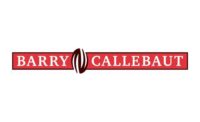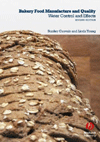
Frank Temme, KHP’s director of sales, points out where a complete toffee cooking line, capable of turning out 1.5 tons of toffee per hour, is being readied for testing and shipment.
Across the aisle there are threeRotamat film cookers designed for a toffee and fondant line getting a final inspection. These are also headed for Russia. In another corner, a technician readies equipment for the pharmaceutical industry. Although it’s Saturday, everyone at the company takes customer commitments and deadlines seriously.
Despite the near global economic meltdown, the company has had a good start this year, with orders carrying over from 2008 for completion and shipment. Nevertheless, both Temme and Heiko Kühn, the company’s managing director, expect a slowdown during the coming months as the global recession impacts all confectionery suppliers (See European Suppliers Roundtable article on pgs. 17 – 28).
The two executives, however, are confident that KHP’s current strategy, one built on continuous innovation and technical expertise and experience, sets them apart as a supplier of choice, particularly during tough economic times.
After all, it’s a heritage that dates back to 1911, back to founding engineer Otto Hänsel who started the company in Dresen-Fretial, Germany. Two World Wars, Communist nationalization and various corporate acquisitions later, KHP is now part of Salzgitter AG’s Technology division in the Klöckner-Werke group.

Klöckner Hänsel’s sales director Frank Temme chats with technician Jan Fomiczenko about a customer’s specific requirements prior to final assembly at the company’s facility in Hannover, Germany.
Such ongoing emphasis on continuous improvement reflects the company’s operational model, a core that’s based on research and development, which is then integrated into plant technology and surrounded by an all-encompassing service and support system.
Under the direction of Kühn, who took over the managing director position in 2005 after the retirement of Hartmut Hagen, KHP has further amplified its research and development commitment, while interjecting a cost containment emphasis.
It’s a strategy that has helped the company carve out a global niche within the sugar confectionery segment, despite the dynamic growth within the confectionery industry being in chocolate this past decade.
“We’ve expanded our market share on a step-by-step basis,” says Kühn.
Thus, when the company was one of the first equipment supplier companies to open up a pilot plant facility, dubbed CandyLab in 1998, it did so with the notion of offering an invaluable tool to its customer base.

Managing director Heiko Kühn (right) at the Klöckner Hänsel booth during the Upakovka show held in Moscow earlier in the year.
As expected, the CandyLab’s first priority focuses on customers, the facility being at their disposition for developmental work or testing for pilot project trials and test runs. At the same time, under Kühn’s direction, CandyLab staff are equally engaged in developing new processing technologies as well as testing recently designed machines.

Bernhard Kopf, CandyLab manager, uses a touch-screen to show Frank Temme the day’s project.
But, as mentioned earlier, the CandyLab is also used by the company to spearhead internal innovations and developments, such as the company’s latest design involving chain and die-forming.
After several months of intensive research and development, the R&D team succeeded in constructing a brand-new die forming design that addresses the increased quality demands regarding the forming of hard candies.
In the past, distracting seams on fully center-filled products commonly manufactured with chain dies simply had to be accepted whereas seamless production of center-filled products on rotary dies limited the amount of filling introduced into the candies, explains Temme. By combining the advantages of both rotary and chain dies, KHP design engineers developed a new forming chain that delivers more filling and no seams simultaneously.
Exhibited at interpack 2008, the development once again demonstrated the company’s ability to translate customer feedback into practical improvements, he adds.
That capability also extends into delivering turnkey projects for customers requiring a one-stop source. KHP “offers complete turnkey projects for hard candy,” and – by teaming up with strategic partners – also offers that capability for other confections.

One of the company’s technicians lifts a forming chain during assembly.
“It was quite a challenge for both parties,” explains Kühn, particularly when faced with accommodating Katjes’ request to produce cut-and-wrap products on a die-forming line.
“The challenge was to ensure our design could accept the transfer of so many different product types onto one production line,” he adds. “Tobias [Tobias Bachmuller, managing director of Katjes] is very demanding, but with our vast experience in sugar confectionery processing, coupled with a good working relationship with Katjes, we answered the call and came up with the right design for the machine.
“And although it was a Fast Track project to begin with, it took less time than expected,” he says.
Presently, the company is also working on another approaching deadline, its upcoming 100th anniversary in 2011, which will coincide with interpack that same year.
“You can definitely expect to see new machines and technologies from us at the show,” asserts Kühn. Indeed, what better way to mark a centennial of quiet confidence.




